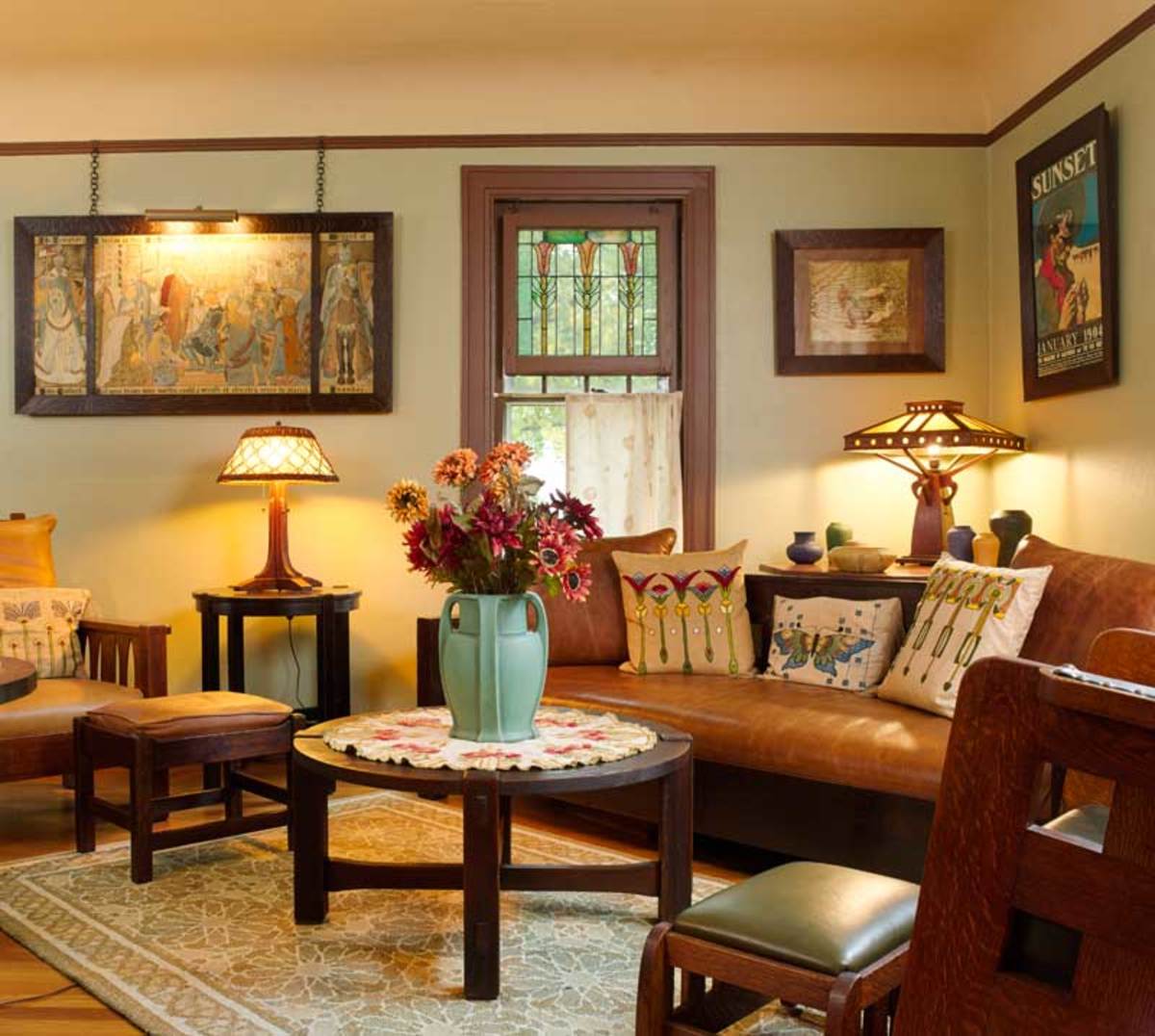Table Of Content

“It was one of my favorite rooms in the house because it was the one that had the most history preserved, and I wanted to really celebrate that,” she told AD PRO. For her Foyer of Enchantment, Scheff installed a custom mural by Hattas Art Studios, a John Richard chandelier dripping with glass leaves, a silk wall covering by Aux Abris, and organic furniture created with Amorph Studio. “I wanted you to feel like you were transported to another time and place,” Scheff says. This International style residence predates the mid-century modern styles that followed it, but it feels like it could have been part of the case study movement of the late 1940s and 1950s.
ARCHITECT RICHARD NEUTRA
Peltier and designer Marina Kelly installed an arch to divide the bedroom from the sitting area, breaking up the large space. As the Pasadena Showcase House of Design enters its 59th year, it’s returning to a familiar setting. The Potter Daniels Manor, the English Tudor Revival–style residence that hosted the 1975 and 1996 showcase houses, has been reimagined with 30 new interior and exterior spaces for the 2024 edition, which is now open until May 19.
The Anita Addison Residence, 1906 Arts and Crafts style in Los Angeles, California - $1.3 Million
Contact Beyond Shelter to find additional historic Craftsman homes for sale in Los Angeles. American bungalow-style homes were designed to be easy to build, which made them affordable for early-20th century working families. A bungalow is a small house that, traditionally, is only one story high, though today it’s common to find ones whose attic space has been converted into a second-story bedroom. Bungalows are raised from the sidewalk with a short flight of steps and feature small verandas, overhanging eaves, and dormer windows. Inside, bungalows use their small space efficiently, with tight, compact closets, built-in cabinets, and shelving. On the first floor, an Arts and Crafts-style home will have an open living room that connects to a dining or multi-use space, with a small kitchen toward the rear of the house.
Craftsman House: Everything You Need to Know
“I’m all about gardens connecting the architecture into the landscape,” landscape architect Timothy John Palcic tells AD PRO. He used a limited palette of chartreuse and dark hues that nod to the brick exterior and arranged benches to create intimate seating areas within the larger English-garden-inspired space. A palette of whites, deep blues, and gold creates an elegant atmosphere in the formal living room, which was designed by Rachel Duarte. The designer established two seating areas within the space, including a cozy gathering spot with chaise longues that flank the original carved marble fireplace. The room’s coffered ceilings were enhanced with a faux-wood decorative painting by Jhon Ardilla. “I really feel like the dining room is a forgotten room,” says the designer, who set out to prove how vital the space is to a home.
FAQs: Are Craftsman houses more expensive to build?
Charles and Henry Greene: Inspiration and Dynamic Evolution - City Council • District 6 - City of Pasadena
Charles and Henry Greene: Inspiration and Dynamic Evolution - City Council • District 6.
Posted: Sat, 06 Jan 2024 08:00:00 GMT [source]
They featured large porches (with tapered columns in many Craftsman-style homes), low roof pitches, and wide eaves. Doors and windows incorporated decorative leaded and stained glass transoms and windows. They used native materials, natural color schemes, and designs and patterns inspired by the natural world. Horizontality and right angles were prevalent in most examples, and interiors often emphasized simplicity in an open floor plan with built-in furniture.
WELCOMING LARCHMONT VILLAGE CRAFTSMAN HOME

Benjamin George of Utah State University describes a couple of ways that Wright, as an example, accomplished this ease of transition between indoor and outdoor spaces. Wright also often incorporated windows into walls at their corners, thereby softening the impression of an indoor box occupied by the inhabitants. In terms of visual style, what follows is a pretty good list, but there seem to be as many exceptions as there are examples. These structures tended to integrate their natural sites, encouraging interaction with the surrounding nature.
Two British country homes inspired by the arts and crafts movement - Forbes
Two British country homes inspired by the arts and crafts movement.
Posted: Mon, 18 Mar 2024 07:00:00 GMT [source]
Now that the significance of the Arts and Crafts movement is being recognised and appreciated, more properties are opening their doors to visitors who are on a quest for the quirky and unique. Architect Richard Neutra's private residence in Silver Lake seemed radical at the time, a glass house with rooftop and balcony gardens. David and Mary Gamble lived in the house during the winter months until their deaths in 1923 and 1929, respectively. Cecil Huggins Gamble and his wife Louise Gibbs Gamble lived in the house beginning in 1946. They briefly considered selling it, until prospective buyers spoke of painting the interior woodwork white.
Handmade ceramics—including tiles for both indoor and outdoor use—became a thriving Arts & Crafts industry throughout the country. Rookwood, Pewabic, Batchelder, Van Briggle, and a host of other potteries flourished. Potteries and other Arts & Crafts industries, in fact, provided the first entry for large numbers of women into the world of design. In Kansas City, Missouri, Mineral Hall (built in 1913 by Louis Curtiss), with its ornamented, arched entrance, is probably the best American example of Art Nouveau architectural features, rarely seen in this country. Americans also sought a simpler but aesthetically richer life, and they were enthusiastic about their own diverse architectural heritage.
Kitchen of the Week: 7 Design Ideas to Steal from deVOL’s Latest Showroom
A grand porch leads to a one-of-a-kind stained glass door and leaded glass sidelights. The interior has many unblemished original details reminiscent of a Frank Tyler design. House & Garden says that the Arts and Crafts movement is just as relevant to the digital age as it was to the beginning of the industrial age. But tastes and materials have changed, of course, so the interpretation of such concepts as "honest materials" and "refined simplicity" will have evolved as well.
SOURCEBOOK FOR CONSIDERED LIVINGThe definitive guide to stylish outdoor spaces, with garden tours, hardscape help, plant primers, and daily design news. The rise of a consumer class coincided with the rise of manufactured consumer goods. Skip the living room or bedroom set and buy individual handcrafted items locally, as your budget allows. These wide porches often had wide doors (although often Arts and Crafts entrances were moved around to the side of the home). These doors were often decorated with artfully arranged window panes, which were further subdivided geometrically into smaller leaded glass panes, according to Extreme Design.
The space is outfitted with high-end stainless-steel Miele and Sub-Zero appliances, as well as plenty of cabinetry for storage. The layout is open and inviting, perfect for entertaining guests or spending time with friends and family. Gorgeous Larchmont Village Craftsman home with an amazing Hollywood pedigree – it is the childhood home of the Arquette family and has remained in the family ever since. The family has lovingly restored and updated the home while retaining its original arts and crafts character and charm. In Northern California, architects renowned for their well-planned and detailed projects in the Craftsman style include Bernard Maybeck, with the Swedenborgian Church, and Julia Morgan, with the Asilomar Conference Grounds and Mills College projects.
These detail-forward homes date back to the 19th century, and even today still resonate with the current cottagecore movement, thanks to their angular exteriors and segmented rooms within. The landmark mansion was built in 1902 by architect Joseph J. Blick for Gertrude Potter Daniels, who paid $15,000 for the shingle-style home. In 1905, Susanna Bransford Emery-Holmes—known as the Silver Queen thanks to the source of her late husband’s fortune—purchased the home and soon made it her own. In 1922, she spent $37,000 to have the Postle Company of Los Angeles, who also built the Pasadena Playhouse, remodel it into an English Tudor Revival–style mansion, giving it the regal exterior that remains today.
It also consisted of a spacious sitting room, which was decorated with five rugs that were designed by Charles Greene using watercolor. Across from the fireplace, there is a window that leads to the terrace, which overlooks the garden. The expansive window was designed to let light brighten the room during the late afternoon. At the far end of the room lie bookcases, a small games table, and a piano to offer entertainment and leisure. The Prairie School architects of Chicago—including Purcell and Elmslie, George Maher, Walter Burley Griffin, and Marion Mahoney (only lately given her due as a designer)—developed and spread Frank Lloyd Wright’s message. Henry Trost’s work in El Paso and elsewhere reflected his training as a Prairie School architect, while in Kansas City, Louis Curtiss took a very different approach; his Mineral Hall may be America’s only true Art Nouveau house.
Nods to Pasadena’s famous peacocks can be found throughout the designs, and many creators fearlessly brought in statement floors, enveloped their spaces with jewel tones, and added texture to ceilings. Others focused on bringing the beauty of the estate’s gardens and views inside with verdant murals, floral fabrics, and nature-inspired lighting. As the construction features are so important to the style, they tend to be exposed, with brickwork and timbers on display. Chimneys are usually oversized, leading to brick or stone fireplaces inside and the windows are often made up of smaller panes for a more traditional look.
The idea was that if quality could replace quantity, good design and good taste would prevail. In the Midwest, which was influenced by Frank Lloyd Wright, the homes that have a Craftsman likeness are in line with the more horizontal Prairie style. The Gambles occupied this Pasadena home until their deaths, and the famed Craftsman house was bequeathed to family. In 1944, the home was for sale, until the prospective buyers mentioned wanting to paint the wood trim white.
Defining elements of a Craftsman home include strong horizontal lines, low-pitched roofs with overhanging eaves and charming front porches. American Craftsman is an American domestic architectural style, inspired by the Arts and Crafts movement, which included interior design, landscape design, applied arts, and decorative arts, beginning in the last years of the 19th century. Its immediate ancestors in American architecture are the Shingle style, which began the move away from Victorian ornamentation toward simpler forms, and the Prairie style of Frank Lloyd Wright. As a reaction to the manufactured and ornate styles of the Victorian age, Arts and Crafts-style homes embraced handcrafted design and approachable materials. The style originated in England in the mid-19th century and came to America around the beginning of the 20th century.


No comments:
Post a Comment